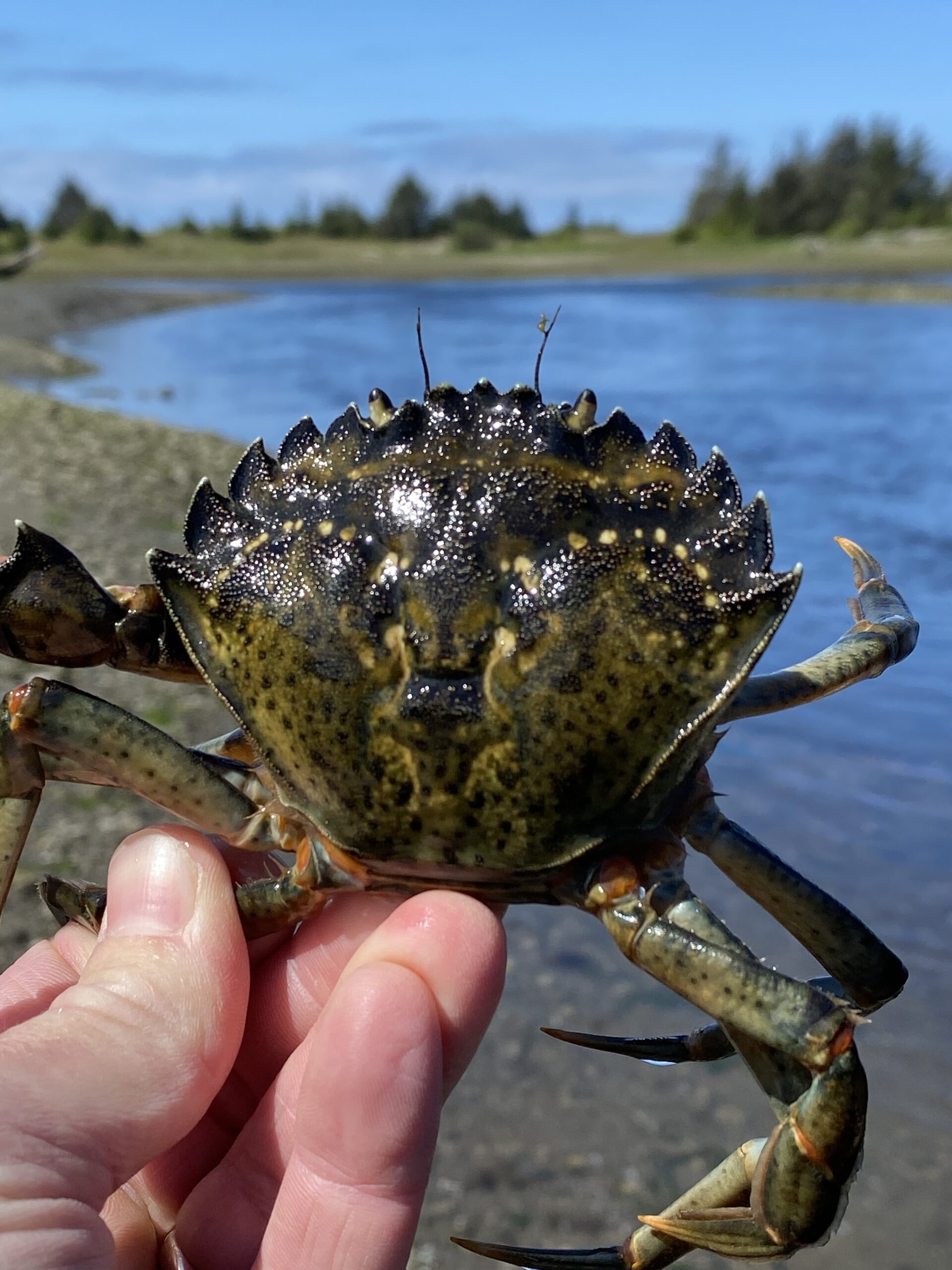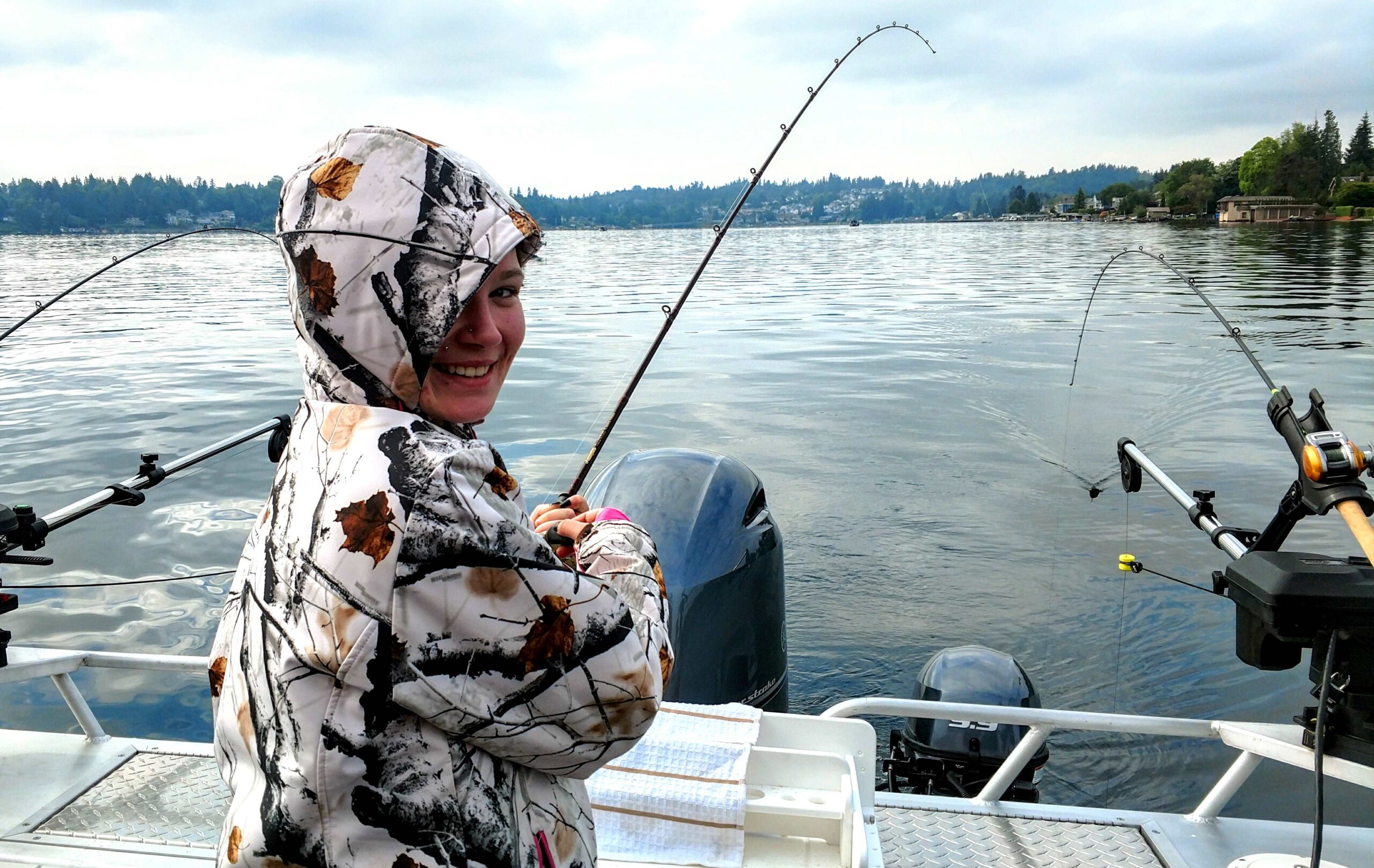It was August 2, 1996. Son Don and I were on the second day of a four-day fishing trip. We had spent the night camping at Riffe Lake’s Taidnapam Park and were now heading to Mayfield Lake to try for one of the elusive tiger muskies. For the past few years, tiger muskies have been the big attraction at Mayfield. A sterile cross between a true muskellunge and a northern pike, they had been planted into Mayfield Lake to help control the large numbers of squawfish and other rough fish. They have a reputation of being very difficult to catch and have been called “the fish of 10,000 casts.”
It had rained hard most of the night and was still raining very hard as we reached the Ike Kinswa State Park launch ramp at Mayfield Lake. We had planned to camp the night at the state park but had noted that the “campground full” sign was posted.
The only raingear we had was jackets so we stripped down to swimsuits and rain jackets. Neither of us had fished for tiger muskies before and had no idea how or where to start so we started at the bridge near the launch ramp.
Don hooked the first fish, a squawfish, — the first of at least 50 we were to catch during the day. We saw a couple of huge splashes near the bridge supports that we assumed must be muskies. We also saw some large, dark shapes in the water that definitely looked like big muskies.
We saw a big fish splash under the bridge. Don motored over and made a long cast with his huge Rapala 18 S. There was a big swirl as the fish struck — Don’s 15-pound test Maxima stretched and snapped. The muskie’s teeth had cut the line as clean as a razor blade. I then cast a large spinner bait to the area and had an instant hook-up.
“Got him,” I said excitedly but the big fish leaped and spit out the hook. We didn’t think it was the muskie but never knew for sure just what species of fish it was.
We continued fishing for a couple of hours. Don was throwing a large silver Rapala Shad Rap and I was casting a large brown crawfish Hawg Boss Super Toad. We were catching squawfish almost constantly. We caught so many that when one was hooked, the other angler barely looked and just kept on casting. “Casting on automatic,” as Don put it.
Finally, Don really got my attention when he yelled, “Muskie, I’ve got one.” The huge fish was beautiful and put up a pretty good fight. Fortunately, this fish was hooked in the lips and was unable to cut the line with his sharp teeth. As he began to tire, we were wondering how we could land it. We had no net. After a few unsuccessful attempts trying to land him by the gill plates, I grabbed his lower lip with a pair of pliers and hoisted him into the boat. The hooks were removed and he was placed into the live well for a much-needed rest.
When the fish was first put into the live well, it was so tired it could not remain in an upright position. I held it upright for a couple of minutes while its gill plates pumped fresh oxygen into its body. The fish then seemed to quickly recover its strength while we readied the cameras and the tape measure.

When we were ready, Don removed his seemingly fully recovered muskie from the live well and we measured it at 36 inches even. Then a few quick photos were snapped and the big beauty was thanked for the memories and gently released. Satiated, by the experience, Don and I just sat down and relaxed in the boat. We celebrated with a cold beer and recapped the catch as the boat slowly drifted in the breeze.
Don offered me the front seat of his boat and first opportunity at prime casting areas. I declined, preferring to relax in the back seat while Don ran the electric motor and controlled the boat. We started fishing again, starting where Don had hooked his muskie. After only about a dozen casts later, Don cast to the end of a large log near the shoreline and started his retrieve. I watched his cast and then cast my crankbait to the middle section of the same log. The fishing gods surely smiled at me as the twin to Don’s beautiful muskie smashed my lure.
“Dad, you’ve got a muskie,” Don yelled only seconds after I had seen the fish hit and had set the hooks.
Fortunately, this muskie also had the crankbait in its mouth and was unable to bite the line. (Wire leaders are a very good idea for these fish.) It too, was beautiful in the clear lake water but fought little with its mouth almost pinned shut by the treble hooks. The big fish was landed and put into the live well for a rest. Again the tape measure stretched to 36 inches. We snapped a few more photos and the big beauty was released to continue his job of eating the numerous squawfish.

Shortly after catching the last muskie, the skies really opened up and the rain just poured down. Seeking some shelter, Don drove the boat under the bridge. As we sat under the bridge, I commented, “I don’t think I’ve ever seen it rain harder than this.” And, — about then, it started raining about twice as hard. Then the wind came up suddenly and started blowing like an angry typhoon.
After a few minutes, the rain and the wind let up and we motored out from under the bridge. We saw a sailboat upside down in the middle of the lake. One person was trying to swim to the shoreline and the other one was clinging to the keel of the capsized boat.
First, we rescued the nearly exhausted swimmer and then motored over to the boat. The man clinging to the keel of the boat just happened to be the state park ranger. We hooked our rope onto his boat, partially uprighted it, and towed it back to the Rangers dock. The ranger was very grateful for the assistance.
“We could use a campsite tonight,” I commented.
“I think we can work something out,” the ranger said.
That evening, we drove into the campground and asked if a campsite was reserved for Johansen. “Yes sir,” the park employee said as he directed us to a free campsite. That evening we had a nice campfire, had some hot chili, and enjoyed a couple of drinks while we recapped a very eventful day.






















